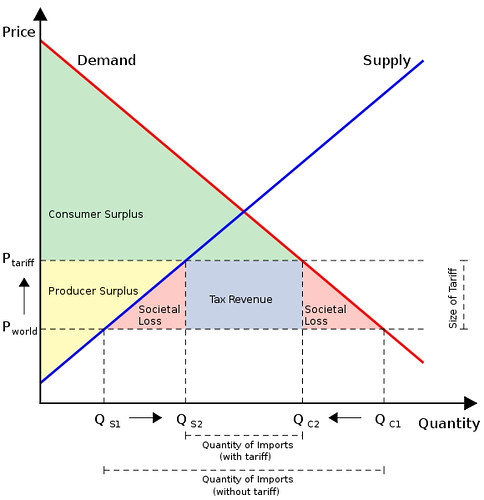Archive for October, 2011

Supply Revisited
Oct 25th
This post is to add further resources on the concept of supply, for those who wish to follow up on this absolutely essential concept in Economics. First, however, I recommend you use the resources on this post to learn about supply: http://opengecko.com/economics/supply/
1) Videos
Supply by vaacon1
Creating a supply curve from a supply schedule by FreeEconHelp
Supply Curve and Changes in Supply by jcsballoon
Change in supply / change in quantity supplied by vaacon1
Various factors (short clips) affecting supply by vaacon1:
The diagrams are quite hard to see on the whiteboard, but the explanations and examples are clear.
Supply shifts – Prices of Relevant Resources
Supply Shifts – Expectations of Future price
Supply Shifts – Number of Sellers
Supply Shifts – Technology
Supply shifts – Taxes and Subsidies
You will need to revise what taxes and subsidies are.
Supply shifts – Government Restrictions
2) Interactive Activities
Factors affecting supply (via http://www.mbs.edu)
Supply via http://yknot.terapad.com
Supply – sellers perspective via http://edunirvana.com
Graphing The Supply Curve via http://glencoe.com
The Law of Supply and Supply Curves via http://www.emcp.com

Demand Revisited
Oct 25th
This post is to add further resources on the concept of demand, for those who wish to follow up on this absolutely essential concept in Economics. First, however, I recommend you use the resources on this post to learn about demand:
1) Videos
What is a demand curve? by 
Note – I think part of his second to last sentence should state “… the basic relationship between quantity demanded and changes in price …”
Deriving a demand curve, given a demand schedule by FreeEconHelp
Demand curve video by jessicaweldon22
Note – at one point she claims the market is the whole planet’s population, but we can talk about more specific, smaller markets than that. E.g. the market for cars in Thailand.
The Demand Curve Part 1 by milespritchardecon1
The Demand Curve Part 2: Shifts In Demand by milespritchardecon1
Change in demand / change in quantity demand by vaacon1
Various factors (short clips) affecting demand by vaacon1:
The diagrams are quite hard to see on the whiteboard, but the explanations and examples are clear.
Demand shifts – prices of related goods
Demand shifts – expectations of future prices
Demand shifts – Income
Demand shifts – Number of buyers
Demand shifts – Preferences
As he adds, in text, part way in, he makes a mistake early on and mentions shifts in supply, when he is actually discussing shifts in demand.
2) Interactive Activities
A Demand Curve (imperial.ac.uk)
Animated Economics – Demand Curves
John Wiley Economics – Shift Versus Movement Along The Demand Curve
Demand by yknot.terapad.com
Graphing The Demand Curve (glecnoe.com)
Tariffs, Quotas and Subsidies
Oct 23rd
These three types of protectionism have pretty tricky diagrams (or at least they can get tricky if we want to really get into how they work in terms of the impact they have on different groups or stakeholders. Note – we should want to get tricky if we want to do well at IB Economics ![]() ). Here is a round up of resources to help you understand their effects.
). Here is a round up of resources to help you understand their effects.
Remember to first find a good working definition of each of these types of protectionism. Go on … Google them ![]()
An overview of the three types is here, although the ‘Next’ function does not work.
There is an excellent summary of the relevant theory here by Evan Schmidt on his impressive blog (http://schmidtomics.blogspot.com/)
Tariffs
Here’s what a diagram might look like. It gives a good idea of the complexity of the diagram:

Image: Some rights reserved by Gaynoir_
However, I recommend you refer to ‘welfare loss’ instead of ‘societal loss’ – whatever the term you use, these pink triangles represent inefficiency. I also recommend you use letters for the different ‘shapes’ rather than colours, as that is far more efficient to complete in an exam and to refer to in your text which you use to explain the diagram. This diagram below uses letters, but note, you can (should) still get even more sophisticated than this – check your IB Economics text book if you have one.
Image by Ratibgreat on wikipedia
This first video by lostmy1 is a simple explanation compared to the following videos, but it is very accessible. It does not tackle efficiency / consumer and producer surplus, and these are concepts which you should then try to understand from the subsequent videos.
This next video by economicsfun is a very good explanation. The second half moves on to analysing in terms of theoretical numbers, which would not be necessary in an IB Economics essay – but being able to identify the different ‘shapes’ which the author colours in would be ideal if you used a lettering system (as is likely to be the case in your text book).
This video by pajholden can not be embedded, but is worth hitting the link below for a further explanation:
tariffs and protectionism by pajholden
Probably the best of the bunch, MechamDee gives us a video with quiet audio, but it is thorough, starting off with the effect of trade compared to non-trade and then moving onto the impacts of tariffs. He gets in to detail with the different ‘shapes’ as letters, although the image itself is small and not so easy to see. It is very well explained though:
These interactive presentations by http://www.reffonomics.com are particularly useful for checking your understanding:
Finally economicslessons give us a slick (and silent) animation that summarises the different effects well, but you’ll definitely want to pause this as you go along to take it in properly:
Quotas
This a particularly tricky one to revise form the internet as there are different, conflicting explanations of how a quota works in an internationally competitive market. For IB Economics, you want the diagram that shows effective supply to be a ‘kinky’ supply curve.
MechamDee gives another thorough explanation, with useful demonstration of the ‘effective’ (or ‘kinky’) supply curve.
Subsidies
What, no videos? No interactive tutorials? Sorry! Who is going to be the first to make one?
Correction: I have found an excellent video analysing the impact of a protectionist subsidy by http://welkerswikinomics.com (welkerjason):
See the full post for some accompanying questions:
Calculating the effects of protectionist subsidies – an IB HL exercise
Anyway, For additional best IB-level information on this, visit the schmidtomics link at the very top of this post, or consult your IB Economics text book!
Resources for #TECHEX2011 Presentation – Building Personal Learning Networks for Do It Yourself Professional Development
Oct 12th
Here are resources I will refer to during the session at TECHEX2011, for the benefit of the audience.
http://opengecko.com/tag/15minpln/
The presentation itself:
15+ Minutes of Inspiration
http://theinnovativeeducator.blogspot.com/
http://tomwhitby.wordpress.com/
http://dangerouslyirrelevant.org/
http://www.thethinkingstick.com/
http://teacherbootcamp.edublogs.org/
Priming The Pump
Get Social With Your Bookmarks
http://www.scoop.it/t/opengecko
Start A Twitter Account
Set Up A Blog for the Bigger Stuff
Excellent post on a similar theme here:
http://theinnovativeeducator.blogspot.com/2011/09/building-your-personal-learning-network.html
And this has been summarised as the interactive infographic shown below:
















